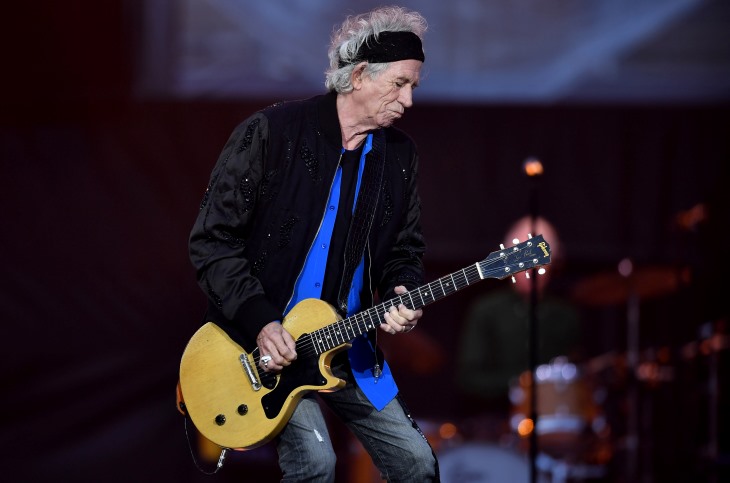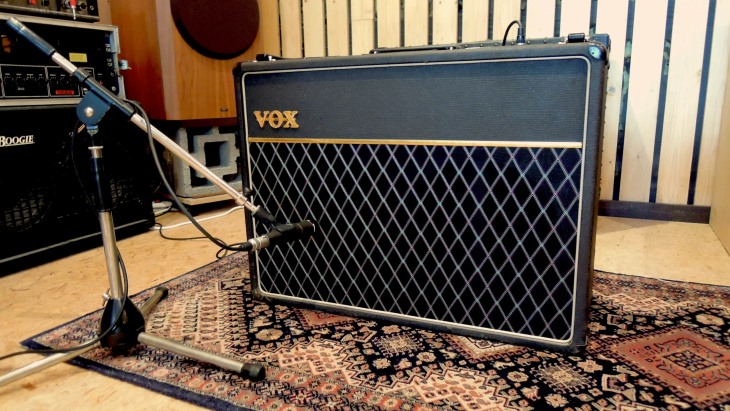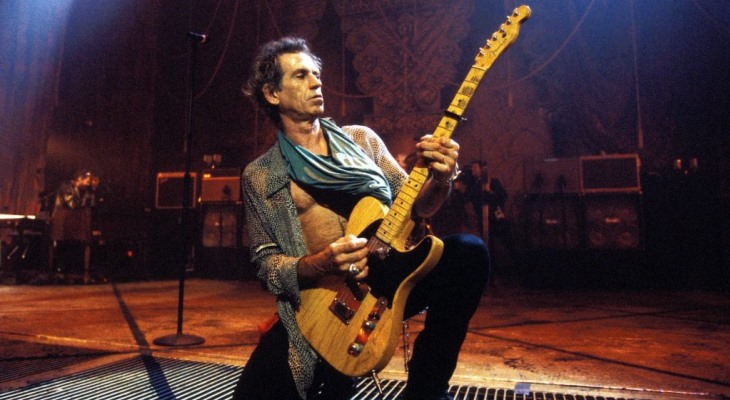The Rolling Stones were pioneers of British rock back in the ‘60s. They remain one of the most recognizable rock bands to this day.
Guitarist, Keith Richards, is a living legend that helped shape the genre. Here is the gear he frequently uses and how to dial in your amp to sound just like one of the greatest guitarists of all time.
Table of Contents
Keith Richards’ Guitars

Richards has used an extensive list of guitars over his decades-long career. From Harmony, Epiphone, and Zemaitis, just to name a few.
But the two brands he has stuck with the longest are Gibson and Fender. The two main guitars he can often be seen playing are Teles and Les Pauls. But Teles seem to be his favorite.
His guitars are all mostly vintage ‘50s models. Like the Fender American Original or Fender Vintera.
He doesn’t play a standard Les Paul, though. Instead, he plays a Les Paul Junior with a single P90 pickup.
Of course, both Squier and Epiphone have more affordable versions available (we’ve compared them in another post, as well).
Keith Richards’ Amps

Just like his guitars, Keith Richards has also used a number of different amps over the years, from classics like Vox AC30, to the Mesa/Boogie Mark I (now Mark Five). He might even be directly responsible for Mesa Engineering existing.
These days, however, he mostly plays Fender amps. He uses three different Fenders: A Fender Twin for live, and a Champ and Tweed Harvard for studio.
These are all ‘50s models, making them quite expensive and difficult to come by these days. The Fender Twin Reverb is one of the best Fender amps available today, while the Champion 100 is a powerful modern Fender amp with a great onboard effects.
Keith Richards’ Pedals

His pedalboard consists of a few different pedals, but there are three that lie at the heart of it.
First up is the Maestro Fuzz-Tone. The Fuzz-Tone was actually the first fuzz pedal ever made. Keith Richards would go on to popularize it when he used it on The Rolling Stones’ song Satisfaction.
Next up is the MXR Phase 100. The Phase 100 is a fantastic phaser pedal that can span a wide variety of different sounds, from rapid and glitchy, to slow and space-y. The Phase 100 can be heard on the song Shattered.
And last, but certainly not least, Richards also uses an Ibanez TS9 Tube Screamer. The Tube Screamer is a classic distortion pedal used by many famous guitarists.
He actually doesn’t use it that often, usually just cranking the gain on his amp. But the Tube Screamer can provide a nice boost when needed, and is great if your amp’s overdrive doesn’t sound as good as you want it to.
I would also like to mention that he also uses a tape echo delay to add some extra color and character on certain songs. The TC Electronics Gauss and Keeley Magnetic Echo are both great tape-style echo delay pedals.
Keith Richards’ Amp Settings
Now that we know what gear Keith Richards uses, let us take a look at the settings he uses.
Keith Richards’ sound isn’t very aggressive or heavy. He doesn’t use a lot of gain, and his EQ leans to a thinner, brighter tone.
This, of course, means that you want to set your amp to the same or similar settings. The three most important things to keep in mind are low gain, high treble, and a touch of reverb.
With just these three key points, you should actually be able to get fairly close to Keith’s sound. But your settings should end up looking something like this:
- Bass – 4/5
- Mids – 5/6
- Treble – 6/7
- Gain – 3/4
- Reverb – 2/3
These settings are a good starting point to then adjust according to different songs.
One thing to keep in mind is what type of amp you are playing on. Gain works a bit differently on solid-state and tube amps.
On a solid-state amp, you should be able to just use the clean channel and turn the gain up to around 4. Some solid-state amps don’t allow this, in which case you can use the distortion channel and only turn the gain up to around 3.
On a tube amp, you will want to turn the gain up just past where it starts to break up. Your goal with both a solid-state and tube amp is to get an overdriven sound, not a distortion sound.
With all that said, here are the settings for some of The Rolling Stones’ popular songs to get you started.
(I Can’t Get No) Satisfaction
- Bass – 6
- Mids –6
- Treble – 4
- Gain – 4
- Reverb –3
Gimme Shelter
- Bass – 4
- Mids – 5
- Treble – 7
- Gain – 3
- Reverb – 2
Paint It, Black
- Bass – 4
- Mids – 6
- Treble – 6
- Gain – 2
- Reverb – 2
Sympathy For The Devil
- Bass – 4
- Mids – 6
- Treble – 9
- Gain – 5
- Reverb – 2
Conclusion
With a Tele, a Fender amp, and some light gain, you too can sound like one of the greatest rock ‘n roll bands in history.

